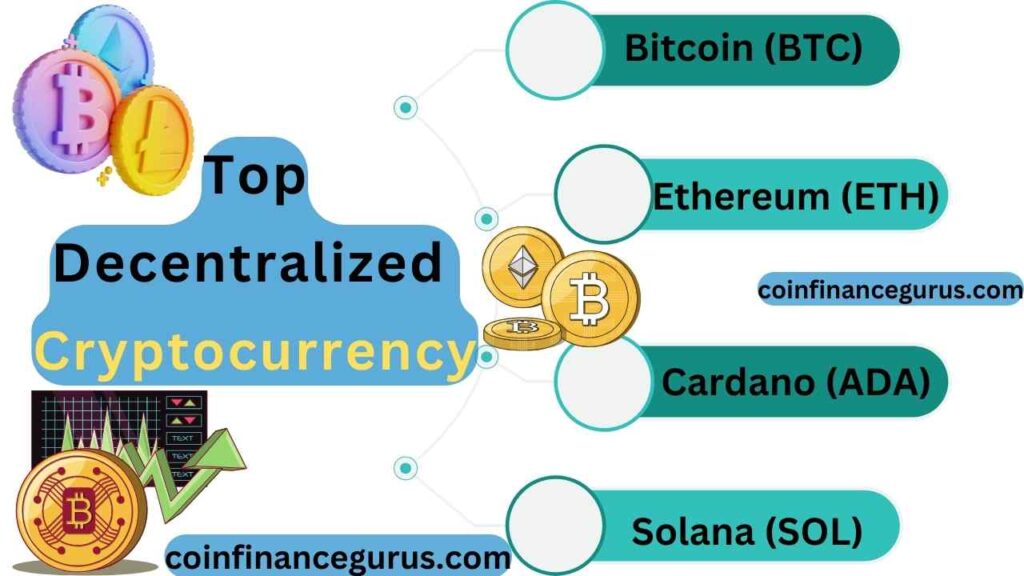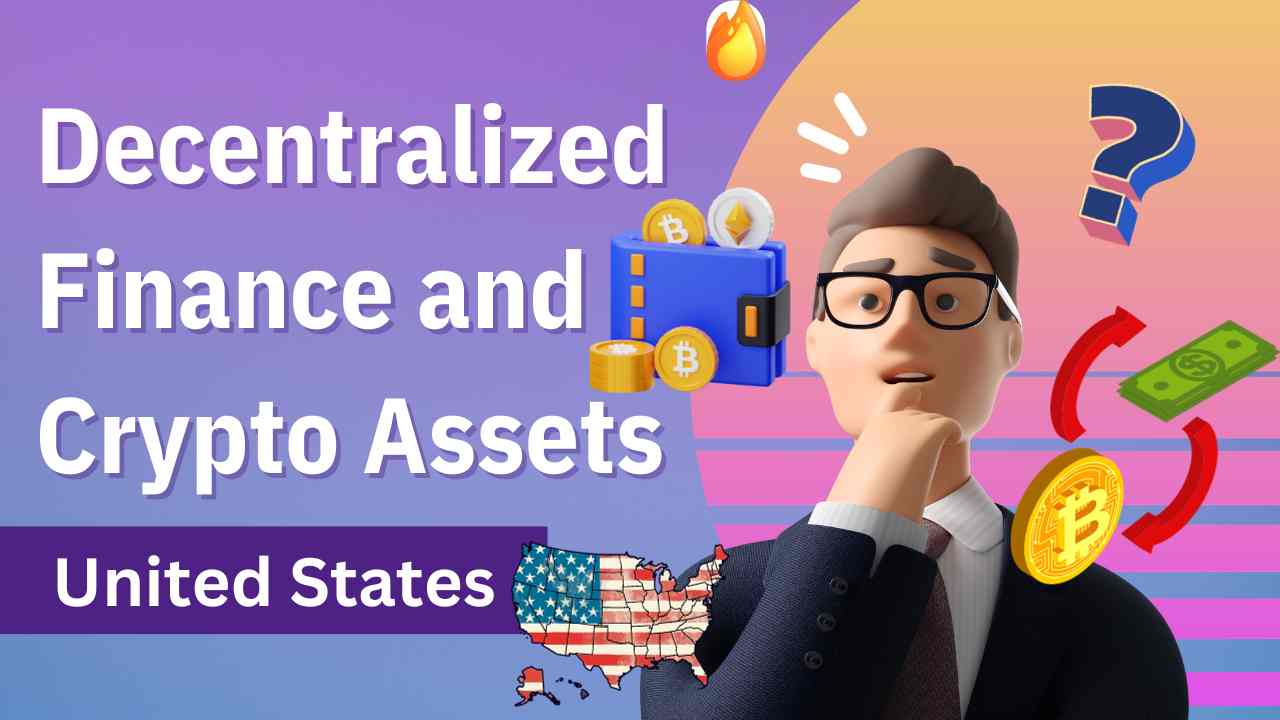Introduction
Here is a sentence using the phrase “Decentralized Finance and Crypto Assets”:
The explosive growth of Decentralized Finance and Crypto Assets is transforming financial services, expanding access to transparent and efficient platforms powered by innovative blockchain technology and crypto assets without centralized intermediaries.
By eliminating intermediaries through peer-to-peer decentralized applications running on blockchain networks, the burgeoning ecosystem of decentralized finance (DeFi) aims to transform traditional financial services with enhanced transparency, accessibility, and efficiency.
Powered by crypto assets and distributed ledger technology removing central points of control, these groundbreaking platforms represent a paradigm shift toward the decentralization of finance – promoting open participation while transferring control from established institutions directly into the hands of users.
Decentralized finance (DeFi) and crypto assets are transforming financial services in the United States at a stunning pace. Powered by innovative blockchain technology, these novel financial platforms are disrupting traditional finance with groundbreaking applications that promote accessibility, transparency, and efficiency.
This explosive emergence and adoption of decentralized financial systems represent a paradigm shift in how individuals and institutions conduct financial transactions.
Our comprehensive analysis will explore the foundational technological innovations fueling this growth, provide insights into the expanding capabilities and real-world impacts of DeFi applications, examine the evolving regulatory landscape, assess risks, and highlight key factors that will shape the future of this new digital economy.
The Underlying Foundation: Blockchain Technology and Crypto Assets
The decentralized architecture of blockchain networks provides the backbone for decentralized financial systems by enabling peer-to-peer transactions without intermediaries.
We will unravel the workings of this groundbreaking technology and provide an overview of prominent crypto assets to set the stage for examining the world of DeFi.
The Revolutionary Potential of Blockchain Networks
At its core, blockchain technology provides an immutable and transparent record of transactions through a decentralized ledger spread across a peer-to-peer network.
The game-changing ramifications of this design stem from eliminating the need for intermediaries to facilitate interactions.
The innovation of consensus mechanisms also enables trustless verification of transactions on public blockchains between pseudonymous participants without central authorities.
Unraveling these unique capabilities illuminates why decentralized ledgers serve as ideal foundations for rewiring financial services.
Prominent Crypto Assets on the Rise
Built upon blockchain networks, crypto assets represent programmable digital currencies and tokens underpinning decentralized financial applications. The total market valuation for these assets reached a record $3 trillion in 2021, underlining the explosive growth.
We will explore the functionality of leading crypto assets powering this expansion:
- Bitcoin – Created as a peer-to-peer decentralized currency, Bitcoin represents the gateway asset to the world of crypto-powered finance.
- Ethereum – As a programmable blockchain featuring smart contract functionality for developers to build decentralized applications, Ethereum serves as the foundation for most mainstream DeFi platforms.
Alongside analysis of stablecoins like Tether, which maintain price stability, as well as alternative smart contract networks and tokens fueling DeFi growth, our exploration will illustrate the expanding ecosystem of crypto assets broadening access to decentralized financial services.
United States Government-Backed Cryptocurrency

Here are some key points about a potential US government-backed cryptocurrency:
- No official US crypto yet – The US federal government has not yet introduced any plans or framework for an official digital currency. However, research and discussion is underway.
- Fed exploring the idea of CBDC – The Federal Reserve has been actively researching and evaluating the possibility of a central bank digital currency (CBDC). A recent report highlighted the risks and benefits of a digital dollar.
- Main motives around stability – Key motivations for government-backed crypto from US policymaker viewpoints focus on financial stability, implementing monetary policy more efficiently, and maintaining the dollar’s dominant status in global finance.
- Legislative efforts still early – A few bills have been introduced with proposals related to creating a digital dollar, studying prospects of a CBDC, or examining impacts on monetary policy – but no laws enacted yet.
- Privacy is a complex issue – Ensuring user privacy protections while meeting anti-money laundering and tax compliance standards is proving to be a challenge in a potential US crypto. More policy analysis is centered on solving this issue.
- Geopolitical factors accelerating push – Rising adoption of CBDCs globally, increased cryptocurrency use for payments worldwide, and the fast growth of stablecoins are catalyzing more urgency around determining clear regulation.
In overview – While research and assessment are actively ongoing, the question of whether (and in what form) an official US government-backed cryptocurrency emerges remains complex with no decisions imminent as yet. However several factors are incentivizing increasing prioritization.
Surging Adoption of Decentralized Financial Applications
With a strong foundation established, we will provide an in-depth examination of the disruptive world of decentralized finance.
Our analysis will focus on the core components of DeFi reinventing financial services, assess surging adoption rates that underscore the increasing transfer of economic power to these platforms, and highlight real-world applications delivering tangible value.
Dividing the Anatomy of Mainstream DeFi
Decentralized exchanges now account for over $100 billion in daily trading volume, stablecoins boast market caps exceeding $100 billion, and decentralized lending protocols have surpassed $20 billion in total value locked – statistics underscoring the meteoric rise of DeFi.
We will break down the inner workings and primary use cases of leading platforms within mainstream DeFi categories:
- Decentralized Exchanges – Allowing peer-to-peer cryptocurrency trades without intermediaries.
- Stablecoins – Maintaining price stability by pegging cryptocurrencies to external assets like the US dollar.
- Lending Protocols – Facilitating lending and borrowing of digital assets using smart contracts.
Alongside analysis of emerging sectors like decentralized derivatives and predictions markets, our exploration illuminates how these platforms expand access and efficiency in asset trading, payments, lending, and more – while minimizing barriers.
Surging User Growth Signals Widening Adoption
The number of active DeFi users skyrocketed from 100,000 in 2019 to over 3 million by the end of 2021 – showcasing increasing adoption. Our examination will highlight factors like enhanced yields, flexible collateral options, and reduced barriers fueling this growth.
We also assess metrics estimating over 16% of Americans now own cryptocurrencies and unpack statistics pointing to exceptionally high ownership rates amongst digitally savvy youth demographics. Together, these insights underscore the strong tailwinds of decentralizing finance.
Bringing Real-World Value Through Mainstream Integration

Expanding beyond speculative trading, mainstream corporations like PayPal, Visa, and Mastercard are now embracing crypto payments and services. Our analysis explores how the integration of crypto and DeFi into conventional financial networks can enhance the inclusiveness of financial services.
Additionally, we examine global use cases where decentralized platforms are bringing financial services to unbanked communities, along with showcasing how smart contracts are reducing settlement times and costs across traditional finance processes like international trade finance.
These developments underscore the expanding real-world utility delivered by decentralized financial systems.
Examining the Regulatory Landscape for Crypto Assets & DeFi
As decentralized financial platforms witness meteoric growth, regulatory considerations come into sharp focus. We will analyze the complex and evolving policy landscape shaping crypto and DeFi in the United States.
Decentralized cryptocurrency list

Here is a list of some of the top decentralized cryptocurrencies:
- Bitcoin (BTC) – The first and most well-known cryptocurrency based on a decentralized blockchain network. Bitcoin operates without central control or issuers, the network is maintained by thousands of nodes globally.
- Ethereum (ETH) – The second largest crypto by market cap runs on a decentralized blockchain featuring smart contract functionality for decentralized apps. Ethereum plans to transition to a proof-of-stake consensus model.
- Cardano (ADA) – Designed from the ground up to be a decentralized blockchain optimized for scalability, Cardano uses a Proof of Stake consensus model powered by community participant nodes.
- Solana (SOL) – A high-performance decentralized blockchain network built to enable scalable decentralized applications with low transaction costs. It uses a unique Proof of History consensus mechanism.
- Polkadot (DOT) – Allowing interoperability between different blockchains, Polkadot’s decentralized heterogeneous multi-chain architecture aims to power a web of interconnected blockchains.
- Polygon (MATIC) – Works as a scaling solution for building interconnected blockchain networks with Ethereum at the heart to help expand decentralized application potential.
- Algorand (ALGO) – Uses a Permissionless Pure Proof of Stake blockchain designed for decentralization, scalability, and security through cryptography and consensus models like Verifiable Random Functions.
These are some leading decentralized cryptocurrencies powering components of the broader decentralized finance and application ecosystem based on their consensus models, community governance, and technology architectures.
Classifying Digital Assets: Securities, Currencies or Commodities?
Regulatory classifications carry major ramifications for how crypto assets and decentralized platforms are governed. We will break down key considerations around whether prominent tokens like Bitcoin and Ether constitute securities, currencies, or commodities – alongside unpacking associated regulatory implications.
For decentralized lending protocols and derivatives markets, considerations around whether interest-generating activities or synthetic asset offerings qualify as securities also hold powerful ramifications, potentially mandating compliance with laws like the Howey Test. Our analysis will simplify these complex dynamics.
What is the future of DeFi 2023?
Here is an overview of the future outlook for decentralized finance (DeFi) in 2023:
- Continued rapid growth and adoption – DeFi has seen exponential growth recently, with over $100 billion locked in DeFi protocols. This growth trajectory is expected to continue in 2023 as more investors enter the space and new use cases emerge.
- Greater interoperability between blockchains – There are likely to be more bridging solutions between blockchain networks, allowing assets and data to move seamlessly between Ethereum, Polygon, BNB Chain, etc. This will expand the design space for DeFi developers.
- Evolution of layer 2 scaling – Congestion on networks like Ethereum has led to very high gas fees. Layer 2 solutions like rollups and valiums are expected to improve vastly in 2023, enabling faster and cheaper DeFi applications.
- Advance of institutional DeFi – Institutions have started allocating to crypto and DeFi in a big way. This institutional influx will continue as asset managers seek higher yield opportunities. It can significantly expand the capital base for DeFi protocols.
- Regulation and compliance updates – 2023 may see increased regulatory clarity for DeFi in global jurisdictions. Most protocols will focus on compliance measures related to KYC, AML, custody, fund management, and liquidity rules. This can improve standards and lead to greater mainstream confidence.
- Platform innovations for users – Developers will concentrate on making DeFi more user-friendly for average retail users. Better fiat on-ramps, simplified fund management, and intuitive interfaces can enormously expand adoption.
So in overview – reduced friction, enhanced interoperability between networks, better compliance, and usability improvements will shape the future as DeFi expands further in 2023.
IQ Protocol: Decentralized Rental Marketplace for Gaming Assets and NFTs
Unpacking the Role of Financial Regulators
Navigating the responsibilities of bodies like the Securities Exchange Commission overseeing securities laws, the Commodity Futures Trading Commission monitoring commodity derivatives, and the Treasury Department enforcing Anti-Money laundering policies represents a multidimensional challenge for crypto market participants.
We will outline the purviews of these major regulators and highlight steps taken regarding topics like crypto taxation, stablecoin reserves, Know-Your-Customer standards, exchange registration requirements, and more – arming readers with insights into this fluid landscape.
The Outlook for Crypto Regulation United States
While the absence of comprehensive federal legislation keeps policies fragmented, our examination will highlight increased oversight signaling tighter future regulations. With decentralized platforms expanding into mainstream finance, developing effective policy frameworks balancing risk management priorities with innovation will be imperative.
We will conclude this regulatory review by assessing proposals focused on consumer protection, platform accountability, mitigating volatility risks, and enhancing responsible innovation – identifying promising policy pathways as adoption accelerates.
Navigating Risks and Understanding Influential Factors for the Future
While the growth trajectory for DeFi appears robust, our balanced analysis also addresses inherent risks in these market-driven ecosystems alongside external factors likely to shape future developments.
Bitcoin ETF Tokens: Transforming Finance and Driving Crypto Adoption
Mitigating Critical Risk Factors
Despite underpinning principles of decentralization, DeFi platforms still rely on infrastructure like cloud computing services and both institutional and retail investor participation – introducing centralization risks.
Additionally, coding vulnerabilities exposed in smart contract breaches alongside scam activities plague the expanding DeFi landscape. Our risk analysis will mitigate these concerns by examining security enhancements and educational initiatives seeking to amplify integrity and accountability across DeFi.
Could the rise of cryptocurrencies challenge the dominance of the US dollar?

- Crypto still represents a small portion of global financial transactions compared to fiat currencies like the US dollar. Crypto’s total market cap is hovering around $1 trillion, while the US Dollar remains the global reserve currency with trillions in circulation globally. This vast difference in scale suggests crypto still has an enormous way to go before directly challenging the dollar.
- That said, the explosive growth rates in the adoption of crypto as outlined in the article point to strong momentum and expanding utility that could steadily erode reliance on traditional currencies. As more corporations and investors allocate capital to crypto markets, a gradual shift is conceivable over the long term.
- Factors like high volatility and speculation currently limit crypto’s ability to fulfill core currency functions like serving as a reliable store of value and medium of exchange. These technical limitations still keep crypto from seriously challenging currency dominance in the near term.
- However, mainstream adoption advancements mentioned around integration with payment networks and expanding real-world utility for everyday transactions could incrementally strengthen the case for digital currencies to take a bigger seat at the table.
- While a wholesale displacement of the US dollar looks unlikely given its entrenched advantages as the world’s reserve currency in the existing financial system, the article highlights how accelerating decentralization of finance is bringing more competition. This suggests we could be heading toward a multi-currency world where both traditional and digital currencies coexist serving complementary roles.
In conclusion – seismic shifts can unexpectedly accelerate with rapidly advancing technologies, but projections suggest an expanding diversity of currencies rather than outright displacement of dollars by crypto in the foreseeable future. The scales remain tilted heavily in favor of the dollar for now.
What is the relationship between DeFi and cryptocurrency?
There is a very close and symbiotic relationship between decentralized finance (DeFi) and cryptocurrencies:
- DeFi platforms and applications are built on top of public blockchain networks like Ethereum, which utilize their native cryptocurrencies to power transactions and interactions. For example, the gas fees that fund transactions on Ethereum are paid in its native token Ether (ETH).
- In addition, many DeFi applications like decentralized exchanges and lending protocols use cryptocurrencies and stablecoins as the main assets being exchanged or lent/borrowed. Without the liquidity provided by these crypto assets, many DeFi apps could not properly function.
- Cryptocurrency wallets and crypto-focused interfaces serve as the main gateways for retail users to access and use DeFi platforms. This further drives the adoption and utility of cryptocurrencies.
- The fundamental aim of many DeFi platforms revolves around expanding access, efficiency, and transparency for activities involving crypto assets – like trading, borrowing/lending, and transactions.
- Cryptocurrencies also serve as tokens for DAO governance of many DeFi protocols, allowing holders to shape future platform developments through voting rights.
In overview – DeFi leverages the base-layer infrastructure of blockchain networks and crypto assets to reshape financial services. Meanwhile, surging usage and integration with DeFi are expanding real-world utility for cryptocurrencies. This deep, mutually beneficial interdependence underpins their exponential growth trajectories.
So in essence, DeFi acts as a major use case demonstrating the practical application of cryptocurrencies for decentralized finance, while crypto assets provide the foundation for DeFi innovation to build upon.
External Catalysts Driving Future Trajectories
Alongside technological improvements like enhanced scalability and cross-chain interoperability expanding functionality, tightening regulations and growing institutional investment appear positioned to fuel continued growth.
Our exploration concludes by highlighting how these external catalysts may shape future developments as decentralized finance realizes its disruptive potential across financial services.
Conclusion: The DeFi Transformation is Underway
In closing, our comprehensive analysis has traced the technological foundations of blockchain networks and crypto assets powering the meteoric rise of decentralized finance – revolutionizing how individuals and institutions access financial services.
From dissecting the expanding capabilities of lending protocols, exchanges, stablecoins, and derivatives platforms making up the core of DeFi to examining surging adoption rates bringing new demographics into these ecosystems, the scale and momentum of this transformation are abundantly clear.
While risks exist, maturing regulatory clarity alongside security and scalability improvements provide grounds for optimism. With corporations and governments also awakening to decentralized finance, the stage appears set for this paradigm shift rewiring the financial landscape to continue unfolding at an explosive pace moving forward.
